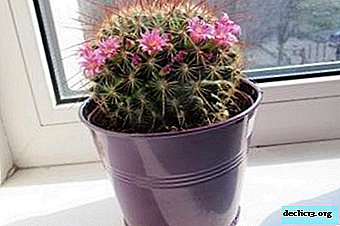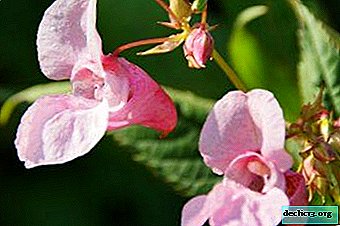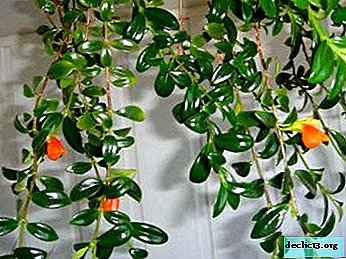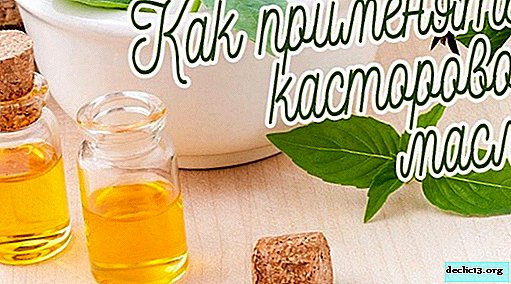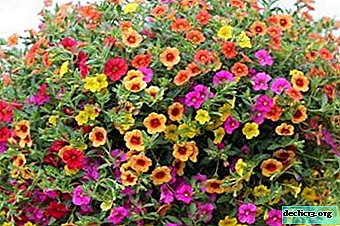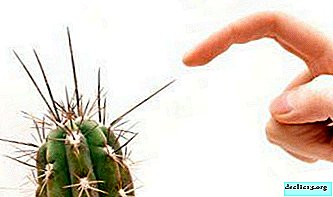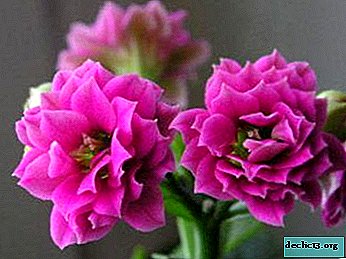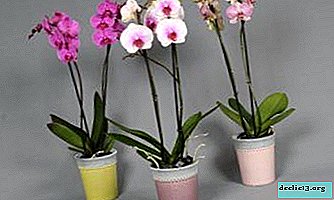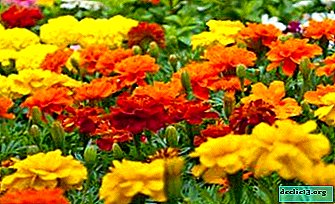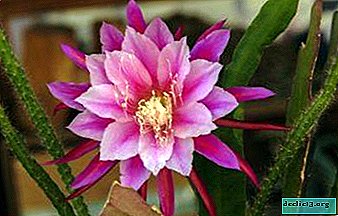If sticky drops appear on the orchid - what is it and how to help the plant?
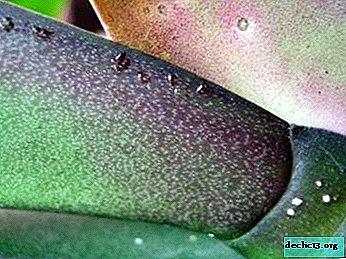
Orchid is a very capricious plant, it takes a lot of time and energy, but the result will please the owner’s eye for a very long time.
Naturally, the appearance of sticky drops on the surface of the plant can not but alert the attentive grower and causes him a lot of questions.
Let us together understand the causes of the appearance of honey dew, how it looks and where it appears. As well as how dangerous it is for orchids and how to deal with it.
Causes of the appearance of honey dew
The sticky drops that stand out on the surface of different parts of the plant are out-flowered nectar, or honey dew. Extraflower nectar is an effusion of the juice of a plant with a high sugar content.
Reasons for the appearance of honey dew:
- Excessive plant nutrition, as a result of which there is enough sugar for the orchid itself, and the excess is released outward due to sweetish drops.
- Wrong regime of watering the plant: first, insufficient watering, and then excessive.
- Pests. In this case, the sweet drops are not the plant’s own juice, but the waste that forms during the life of insects.
For more information on why sticky drops may appear and what to do with it, read this article.
The role of out-of-flower nectar
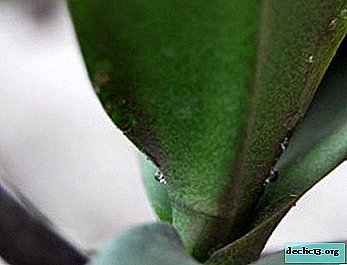 Pest Protectionthat fall into the trap, sticking to the sweet drops.
Pest Protectionthat fall into the trap, sticking to the sweet drops.- Attraction of pollinating insects. If honey dew appears directly on the flower of the plant itself, then pollinators attracted with sweet syrup at the same time pollinate the flower.
- Protection against leaf cutters. A very cunning orchid defends itself against these pests. Drops of non-flowering nectar attract aphids. The aphid settles on the plant and is taken over by the ant, which use it as “dairy cows”. Naturally, ants protect their possessions and drive away leaf cutters. However, the damage from this method of protection is more than good, as the aphids feed on plant sap and weaken the orchid.
What does such a raid look like and where does it appear?
Sticky milky white or cloudy white droplets that occur on different parts of the orchid. An orchid consists of a rhizome (horizontal shoot forming a rhizome), pseudobulb (vertical shoots, which are the visible part of the plant), peduncle (shoot on which flowers form). Sticky coating can appear on the leaves, pseudobulbs, flower stalk of the plant.
You will find out how such spots, plaque or sticky drops look, as well as what are the causes of their appearance and how to get rid of them.
How to get rid of a problem?
Home Care
When dealing with honey dew, it is important to consider the cause of its appearance. To begin with, you should carefully examine the land in the pot, clarify the irrigation regime, exclude overflow or excessive exposure to sunlight. If the cause of the disease is exactly this, then simple methods will help:
- Increase air humidity by spraying water from a spray bottle 2-3 times a day.
- Reduce watering, especially in the cold season.
If the above methods did not help, and the overflow and overfeeding of the plant are excluded, then most likely the cause of the sticky coating is the action of pests.
Important! Most often, the orchid is affected by aphids, ticks, scale insects, powdery mildew.Pest Management Methods
Powdery mildew
Fungal disease. Outwardly, it looks like a white coating on the leaves, which is gradually replaced by a black coating. An effective tool to combat powdery mildew is Alirin-B. 2 tablets of the drug should be dissolved in 10 liters of water at room temperature. In this solution, soak the orchid for 10-30 minutes 1 time in 2 weeks.
Folk remedies:
- Soda ash + soap. Dissolve 5 teaspoons of soda ash in 5 liters of hot water, add 1 teaspoon of laundry soap. Spray the resulting solution 2-3 times a day.
- Potassium permanganate. 1/2 teaspoon of potassium permanganate is dissolved in 10 liters of warm water. With this solution, treat the plant several times a day.
- Mustard. Dissolve 2 tablespoons of mustard in 10 liters of warm water. Allow to cool. The resulting solution can be used both for irrigation and for spraying.
Aphid
The aphid feeds on the plant's juices and captures it gradually, spreading from the roots to the buds. The most probable places of its accumulation are the stem, lower surface of leaves, buds and new processes. Growing, aphids drop their scales, and it sticks to the plant, leaving a sticky coating. If the orchid is not very affected, then you can try to fight aphids with folk remedies:
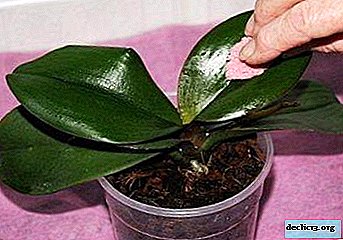 Mechanical cleansing. Rinse leaves and stem with a cotton cloth and warm water, mechanically removing the pest, and cut off damaged flowers and leaves.
Mechanical cleansing. Rinse leaves and stem with a cotton cloth and warm water, mechanically removing the pest, and cut off damaged flowers and leaves.- Soap solution. Wipe the leaves with soapy water 1 time per day. To prepare a soap solution, you should take about 5 liters of room temperature water and start washing out the laundry soap in it until foam appears on the surface of the water. Soap you need to use the simplest household, without the addition of various fragrances and dyes, as they can damage the plant.
- Citruses. Peel citrus fruits (tangerines, oranges, grapefruits) pour boiling water and insist for 4 days, the solution obtained by spraying the plant 4-6 times a day. Also finely grated zest can be put on the ground, which will scare away pests.
- Onion. 1 grate a large onion finely and pour boiling water, leave for 8 hours. The resulting solution is sprayed with an orchid 2-3 times a day. Onions are characterized by a strong unpleasant odor, as well as a high content of natural insecticides, all of which poison the existence of aphids.
Shield
The scabbard sucks the juice from the plant, as a result, the leaves wither, twist, turn yellow and fall off. Folk remedies:
- Garlic. Squeeze the juice from a few cloves of garlic and lubricate the already slightly yellowed and completely affected parts of the plant.
- Olive oil. Dissolve 2 tablespoons of olive oil in 1 liter of water, apply the resulting emulsion to the entire surface of the plant.
- Ethanol. Using pure 100% alcohol is not recommended because of the risk of damage to the plant. Optimal will be the use of a 40% solution, such as vodka. Moisten cotton wool with alcohol and wipe affected areas.
Insecticides are also used to combat scabies: Permethrin, Actellik, Arrivo, Aktara, Bi 58.
Mite
A tick hit looks like a lot of black dots on the surface of a plant’s leavesHowever, if you doubt that this is a tick, then you can conduct a simple experiment. You should take an apple or a cucumber, cut a small piece from it and place with a fresh slice down on the soil in a pot, leave for a day. In a day, turn your bait over and find yourself on the bottom surface of the pest. If you see a lot of small black insects in the shape of a dot, then this is without a doubt a tick.
Folk remedies:
- Mechanical removal. Rinse thoroughly all parts of the plant, then wrap in a plastic bag and exclude direct sunlight. With the package you will prevent the evaporation of moisture, and the orchid will be in conditions of high humidity, which is very detrimental to the tick.
- Cyclomen. Cut cyclomen tubers in half and add water, bring to a boil and cook for 40 minutes, then leave to infuse for 24 hours. The resulting solution to process the orchid 1-2 times a day.
- Wipe with a cotton swab dipped in vodka.
For chemical attacks on ticks, Fitoverm is mainly used. For adequate treatment of sticky plaque, the cause of the disease of the plant should be precisely determined, since the appearance of extra-flowering nectar can be a manifestation of both normal plant activity, and the action of pests, and a violation of the normal watering regimen.
You can read more information about when treatment is needed and how to deal with sticky drops on an orchid in another article.
With a small amount of damage, treatment is recommended to be started with the use of folk remedies, however, if improvement does not occur within 3-5 days, then you should switch to chemical preparations.

 Pest Protectionthat fall into the trap, sticking to the sweet drops.
Pest Protectionthat fall into the trap, sticking to the sweet drops. Mechanical cleansing. Rinse leaves and stem with a cotton cloth and warm water, mechanically removing the pest, and cut off damaged flowers and leaves.
Mechanical cleansing. Rinse leaves and stem with a cotton cloth and warm water, mechanically removing the pest, and cut off damaged flowers and leaves.